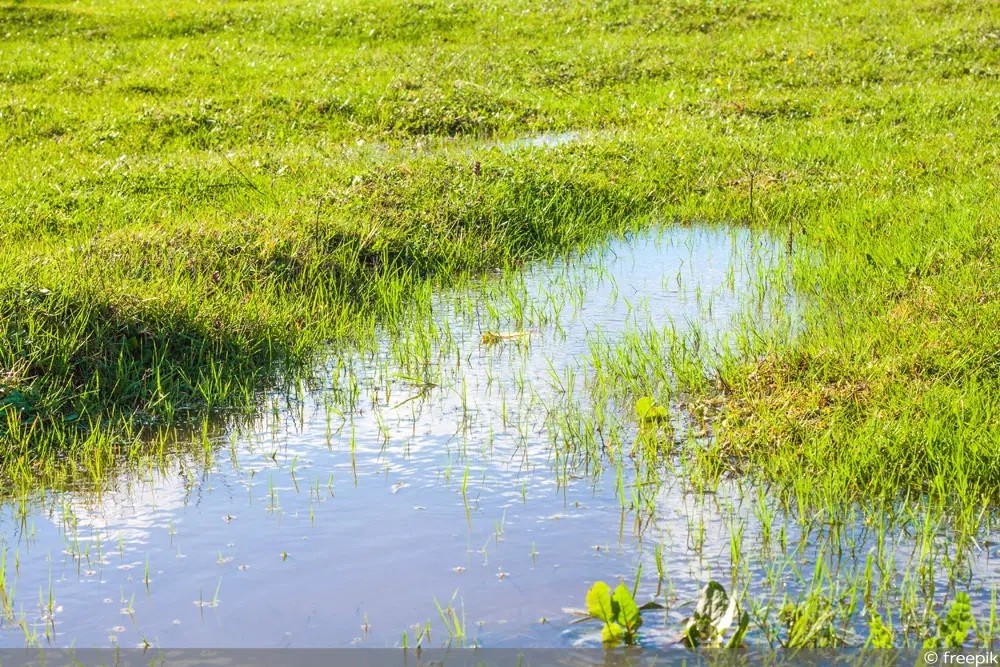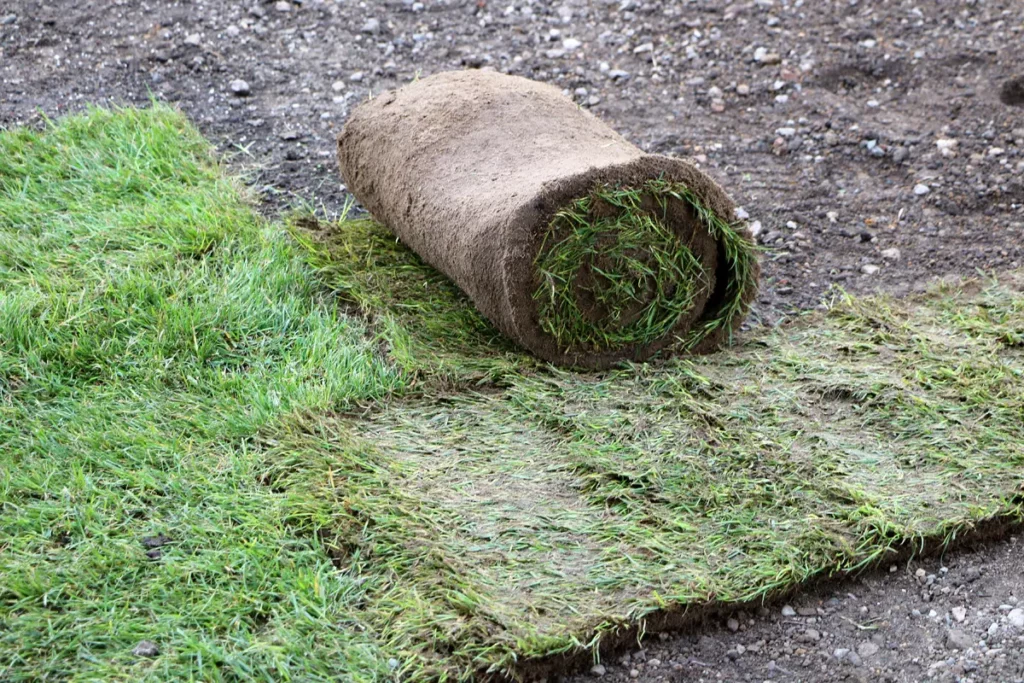For many, turf is the fresh green gem in the home garden. But what are the causes when it turns yellow or brown? And what can you do then?
Contents
Water shortage
A sod that has too little water available tends to change color. The lack of water can be caused by watering too infrequently or too little, or by a lack of contact with the underlying soil. Excessive soil density or voids under the sod also prevent the turf from being able to absorb enough water. You can recognize a lack of water by
- leaves turning brown (starting at the tip)
- rapid drying of the brown parts of the plant
- a previous “lying down” of the grass blades
You can take the following measures accordingly:
Note: Increasing the watering interval makes less sense than increasing the watering quantity, since large portions of the water evaporate quickly and then do not reach the deeper layers of soil at all. Therefore, it is better to water less frequently, but intensively
- Increase the amount of watering
- Eliminate hollow spots by filling
- establish contact with the substrate by rolling
- loosen compacted soil by mulching or gently scarify it
Waterlogging
Even if the lawn loves water, waterlogging in the subsoil can also harm it. You can recognize this by a high moisture content in the soil and by uniformly yellow to brown discolored blades in the turf. Waterlogging is caused by too intensive watering. The roots of the turf then develop rot and the plants die. The roots can no longer supply the blades with the necessary nutrients. The blades become discolored. Against waterlogging you can:

- reduce the amount of watering
- make sure that the soil is well drained
- add sand to the soil
Tip: You can tell if the water content is too high by lifting a sod. The soil may be moist, but should not be muddy-wet.
Nutrient deficiency
Turf, like all plants, needs adequate nutrients. Especially nitrate, phosphate and potassium are very important for it. A too low nutrient content in the soil or a lack of contact with the soil will ensure that the turf does not receive sufficient nutrients. The turf then quickly appears “lacking in energy”. The blades hang limp or lie down. Over time, a brown discoloration develops. You can remedy this situation with the following measures:
- Nutrient supply through special lawn fertilizer
- Increase soil contact of the lawn sods (fill or roll)
Acidic soil
If the pH is too low, the substrate under your lawn is too acidic. Lawn plants thrive best at a pH between 6 and 7. From 5.5 it becomes critical, the soil is then clearly too acidic. The turf turns yellow over a wide area and becomes matted. Yellow mosses spread because they prefer acidic soil. Over-acidified soil occurs mainly after the first winter. To reduce the acidity, you can:
- scarify to improve aeration
- Add lime
Tip: Before taking action, use pH test strips from garden supply stores to determine the exact value. This will ensure that you have found the correct cause of the discoloration.
Incorrect lawn clippings
If the blades are turning brown from the tips of the leaves, in addition to the lack of water described above, incorrect lawn cutting may be the cause. This may have been done too frequently or the cutting height may have been chosen too low. In both cases, the grass blades are then too heavily loaded and die as a result. You can:
- Increase the mowing interval
- increase the cutting height to at least 4, better 5, centimeters.
Note: Proper lawn cutting is especially important in the growing phase, so that the lawn has enough power reserves for root development
Interaction of causes
In practice, there are often also several of the above causes when the sod turns yellow or brown. It is best to start with the most obvious cause and choose measures accordingly. If symptoms remain afterwards, you can take further steps. In this way, you will be able to see more clearly which measure has actually led to which goal, and this experience will enable you to react better to problems with your turf in the future.
Frequently asked questions
Can discoloration be prevented?
To prevent the risk of discoloration, the most important thing is the preparation of the soil before laying and the correct laying of the sod. The substrate should be permeable and well aerated, and the pH value should be precisely adjusted. A too dense soil should be loosened and mulched in advance. During installation, it is particularly important that no cavities are created and that the sod has good contact with the ground.
Are there different types of sod?
There are also different types of turf. Depending on your needs, you can use play and sports turf, premium turf, ornamental turf and shade turf. It is best to ask the dealer for advice on this. He can explain advantages and disadvantages and recommend the right lawn for your needs and garden conditions. The lawn types also differ in the amount of care they require. A low-maintenance variety is therefore recommended, especially for beginners.


